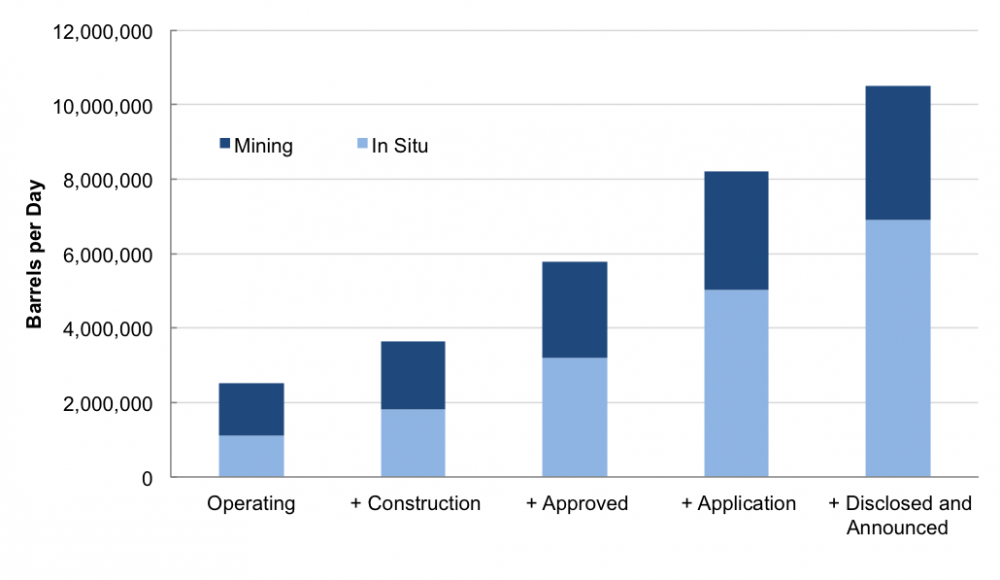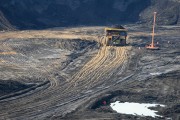In my previous post, I looked at how the emissions intensity of oilsands production has changed over time and what we can expect in the future. The bottom line is that past improvements in the sector have plateaued — and under current policies, they’re expected to remain there for the foreseeable future.
Oilsands emission performance doesn’t have to stay stuck in neutral. The roadmap to lower emissions intensity in oilsands is becoming apparent. Strong policies that drive fundamental innovation for future projects, as well as the deployment of proven technologies and practices in existing operations, could significantly improve the sector’s emissions intensity.
But for that to happen, we need a policy framework that makes sure the cleanest technologies are also the smartest investment.
Getting the signals right
The oilsands industry has already identified several opportunities for improving performance. However, opportunity means nothing without incentives.
Today’s regulations give companies little meaningful incentive to improve their emissions performance. Many of the actions needed to bend the emissions curve in a substantial way simply cost more than can be justified under Alberta’s current climate policy, the Specified Gas Emitters Regulation (SGER). Under the SGER, companies pay a maximum of $15 per tonne for greenhouse gas emissions they emit each year, and that price applies only to a fraction (typically up to 12 per cent) of their facilities’ emissions. This translates into an average cost around $1.50 per tonne (or just 10 cents per barrel) for the oilsands sector. Capturing the more significant technology opportunities available is expected to cost up to $100 per tonne, with carbon capture and storage (CCS) likely costing more.
However, companies have several options for complying with the regulation outside of on-site improvements, and they often find it cheaper (and easier) to comply by purchasing offsets or paying a levy into the provincial technology fund. The regulation also does little to encourage companies to build more efficient facilities from the get-go. And, despite years of promises and negotiations, there are still no federal emissions regulations for the oil and gas sector.
Regulators in Alberta have already approved more than five million barrels per day of oilsands production. These new projects have been approved using current technologies and efficiency measures, and not with more aggressive emerging technologies. Without a much stronger economic signal to guide the final investment decisions, these projects are likely to be built as initially planned.
“Since the majority of new production is expected to occur at new facilities,” Environment Canada points out, “there is an opportunity to adopt these technologies when making choices on capital investments.” A failure to do so risks putting the oilsands on an increasingly untenable emissions pathway.

Oilsands production capacity. Data from Oilsands Review Magazine, Oilsands Datasets, February 2014.
Representatives of the oilsands industry frequently contend that more stringent climate policies will harm their competitiveness. However, as economist Andrew Leach has recently shown, the evidence doesn’t bear out that argument. The economics of oilsands projects are actually very resilient to higher prices on upstream emissions, or even standards based on carbon capture and storage at most new facilities — something Canada’s prime minister himself promised in 2008.
Why intensity matters
It’s not competitiveness risks that should be keeping regulators up at night. Instead, they should be worried about the risks of not reducing emissions intensity in the oilsands. If intensity remains stuck where it is today, absolute emissions from the oilsands will continue their steep climb, reaching 101 megatonnes per year by 2020 and 137 Mt by 2030.
In fact, stringent carbon policy would help ensure that projects are more efficient, and thus more cost-competitive, should natural gas prices climb back up from their recent fracking-driven lows. It also makes them more resilient to lifecycle-based fuel standards like California’s.
Producing a high-carbon fuel in an increasingly low-carbon world will hamper the sector’s ability to access markets and financing. It will also make it much harder for Canada’s economy as a whole to rise to the challenge of tackling climate change.
That’s why strong climate regulations for the oilsands sector are critical, and why the omnipresent talking point about improvements is disingenuous without a crucial qualifier: oilsands performance has been stuck in neutral since 2005 and will remain there without a meaningful push.
Touting past achievements may make for nicer billboards, but masking the challenge of cutting oilsands emissions now and in the future isn’t doing Canadians — or the industry — any favours.
Follow P.J. on Twitter @PJPartington.









